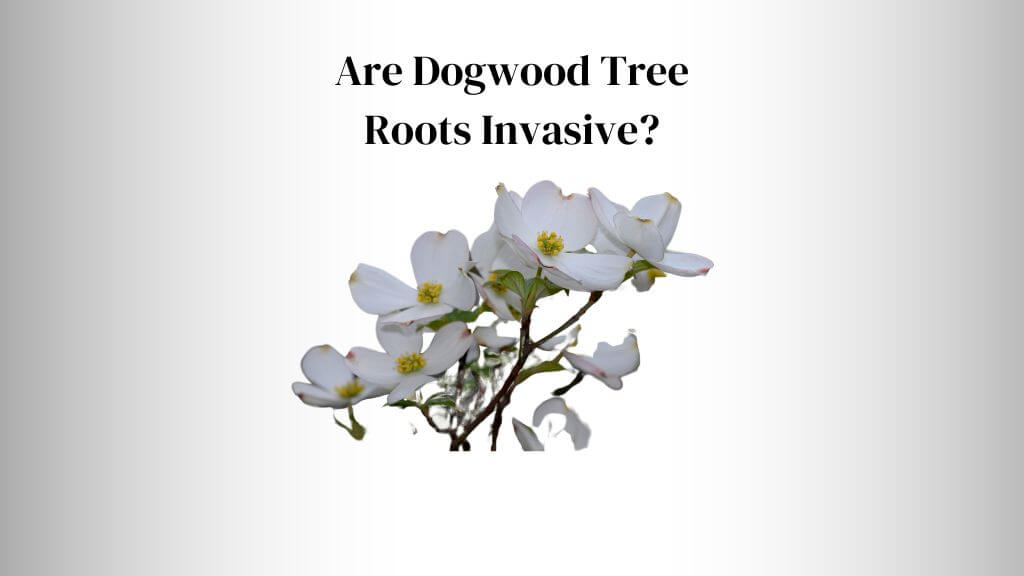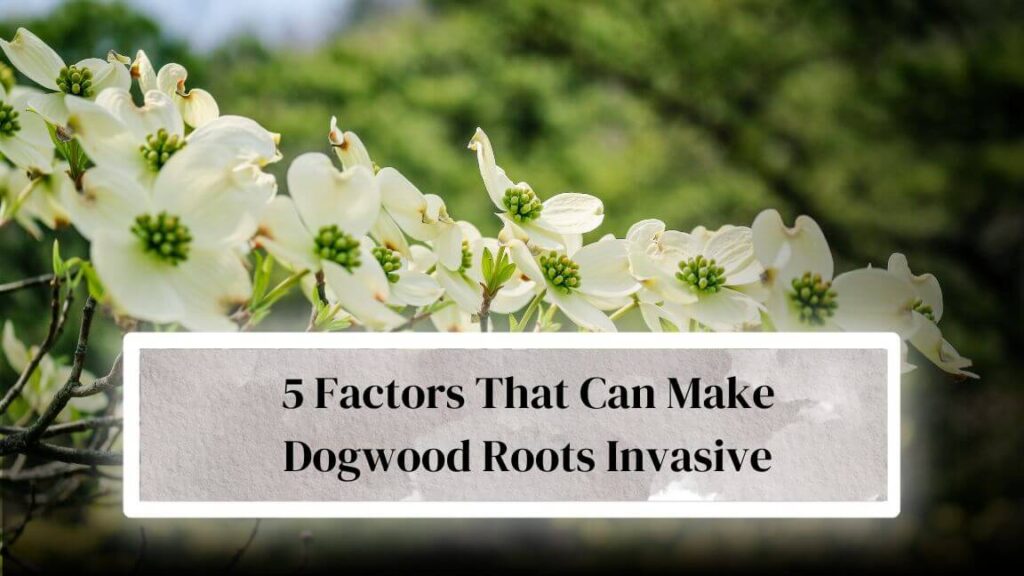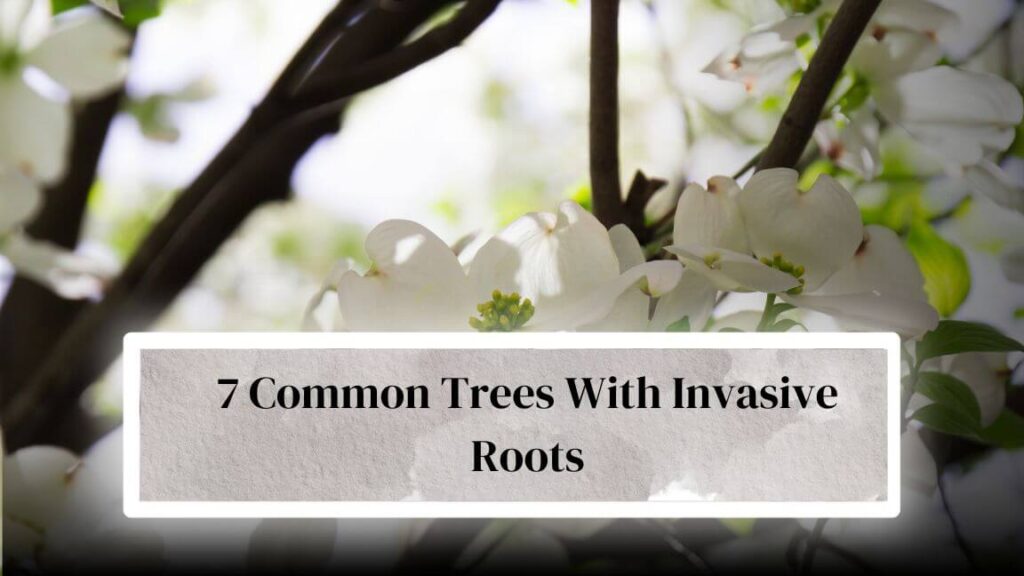
Are Dogwood Tree Roots Invasive? Do you know that even a normal tree root can act aggressively and become invasive if they don’t get enough water nutrients or Oxygen needed to survive, grow, and thrive? If you want to know the answer to the frequently asked question: Are Dogwood Tree Roots Invasive?
Then you’re in the right place. In this article, I will help you learn whether dogwood is invasive or not. Why have people reported dogwood tree roots damaging structures, foundations, sidewalks, and driveways if not?
But before I tell you these things, let’s take a quick look at the question: are dogwood tree roots invasive?
Are Dogwood Tree Roots Invasive?
No, Dogwood tree roots are not invasive. Their roots are typically shallow and wide-spreading, meaning you should still plant them away from structures & foundations, especially sewer lines.
However, If a dogwood tree doesn’t get proper water & minerals in the vicinity, its roots can act invasive in search of easy access to these resources.
According to a study published in the USDA United States Department of Agriculture, the roots of dogwood trees typically extend to a depth of about 30-60 cm and spread out to a distance of 2-3 times the diameter of its crown.
The dogwood tree roots not only help absorb water & nutrients from the soil but also anchor the tree in the soil and help stabilize it against strong winds or other environmental factors.
You must avoid over-watering your three, which may lead to root rot. Many factors play a significant role in the development of the dogwood tree root system and may affect its growth if not paid attention to.
Since dogwood trees are a popular ornamental tree that can add beauty & color to any landscape, you should consider soil type, moisture, and nutrient availability to keep its root system healthy & thriving.
The Myth
People admire dogwood tree flowers, foliage, and fruit in an ornamental garden and tend to debate the myth that they are damaging. Many people believe that the dogwood tree tends to have an invasive root system that can cause serious damage to surrounding plants & structures, which is not true.
Yes, dogwood trees do have the potential to damage structures, foundations, sidewalks, driveways, and surrounding plants due to their system; they can still easily be managed if you plant them at the right location.
If you don’t know When to Plant Dogwood Trees? or Where To Plant Dogwood Trees read both os these article for more thorough information. Dogwood trees have been perpetuated for many years, but the truth is that dogwood roots are not inherently invasive.
Rather than an invasive root system, dogwood trees have an extensive but shallow root system that typically only reaches 12 to 18 inches. Thus the myth that dogwood tree roots are invasive and damaging is not entirely accurate.
However, a few conditions at factors can make a dogwood root system invasive if you are not paying attention, as I told you earlier.
5 Factors That Can Make Dogwood Roots Invasive

Unsuitable Soil
You must never plant a dogwood tree in compacted soil that is poorly drained because its root will not be able to get proper nutrients & Oxygen out of it.
In return, their roots will grow extensively in search of Oxygen and nutrients, leading to invasive behavior. If your dogwood trees are planted in compact, correct them as soon as possible and plant them in a place that doesn’t waterlog.
Lack Of Water
It is important to provide them with regular watering and sufficient water during the hottest part of the day. During dry spells, you must provide your dogwood tree with water deeply and thoroughly.
If your trees are not getting the proper amount of water, its root is likely to spread aggressively in search of moisture to support their growth and healthy foliage.
Improper Planting
It would help if you never planted a dogwood tree too deep because its roots may start to grow horizontally. This may happen in search of the surface which you don’t want. Please dig a hole as deep, deep, and wide as twice their root ball size. A tree planted too deep often suffers from horizontal root growth leading to invasive behavior in search of a surface.
Helpful Guide: Dogwood Tree Planting Instructions: How To Plant Dogwood Tree
Improper Pruning
Yes, improper training techniques can also cause your dogwood tree root to grow unevenly or in unwanted directions leading to invasive behavior.
You must prune a dogwood tree properly and help it focus on growing flowers, fruits, and leaves rather than roots. You should follow the techniques that are mentioned in this article for proper pruning: How To Prune Red Twig Dogwood Bushes
Soil Compaction
If you think your area’s soil is very compact due to heavy foot traffic or construction activities, you should avoid planting trees in it. Any tree, including dogwood trees growing in compacted soil, will suffer from extensive and aggressive root growth in search of air & water.
3 Signs of Invasive Roots
Even though dogwood tree roots are generally not invasive, certain signs indicate your tree’s roots may be damaging your structures & plants. Hence, let’s take a look.
- Lifting Pavement: If the pavement around your dogwood tree is lifting or cracking, it’s a clear sign that its roots are growing very close to the surface.
- Structural Damage: If you notice any structural damage or cracks on any structure, your dogwood tree’s roots might grow too close to your residence or building’s foundation over time.
- Crowded Plants: If you notice other plants surrounding your dogwood tree are struggling or dying, you need to relocate either your plants or the tree directly because dogwood trees’ roots might be competing for nutrients and water.
Preventing Invasive Roots
You can easily prevent invasive routes with dogwood trees as the roots are generally easy to control. You can use a root barrier to prevent any damage.
If you provide your trees with suitable soil, adequate water, and proper pruning sessions l, their roots will grow healthy, strong, and controlled.
As experts suggest, regular maintenance of trees is essential to prevent invasive behavior.Consider taking a look at How To Keep A Dogwood Tree Healthy.
7 Common Trees With Invasive Roots

Even though dogwood trees are not considered invasive, a few common trees tend to have aggressive root systems, and you must avoid planting them near your home or residential building. Some trees that come with invasive or aggressive root systems are as follows.
- Silver Maple
- Weeping Willow
- Norway Maple
- American Elm
- Sweet Gum
- Popular
- Bradford Pear
Managing Invasive Roots
If you think your dogwood tree roots are becoming invasive or aggressive, there are few days to manage them.
One of the most successful methods to control their root size is pruning, which involves cutting and removing problematic roots. Another option is removing and replacing your tree with a less aggressive species.
Conclusion
After reading this article, I hope you learned about the myth that dogwood tree roots are invasive, but it’s not. Neither dogwood tree roots are invasive nor damaging completely.
Certain conditions may make your tree roots aggressive or invasive, like lack of water, unsuitable soil, and lack of Oxygen. This is why you should be following proper planting & maintenance techniques to prevent invasive root behavior.
Consider consulting an expert if you’re still struggling with your tree. I have tried my best to give you all the information on the question: ‘Are dogwood tree roots invasive.’ if you find this article helpful, consider sharing it.
Check our other helpful guide on dogwood tree care & management shared on this website. See you in the next post. Till then, take care and goodbye.
